Minimalist art is a form of art that prioritizes simplicity, clarity, and economy of form. It is characterized by the use of minimal design elements, such as geometric shapes, monochromatic colors, and clean lines.
The minimalist art movement emerged in the 1960s as a response to the complexity and excess of the abstract expressionism movement. Since then, minimalist art has influenced and shaped the art world with its innovative and conceptual works.
In this article, we will explore the world of famous minimalist artists who have made significant contributions to the minimalist art movement. We will examine their works, their impact on the art world, and their legacy. We will also look at the characteristics of minimalist art, its origins, and its different mediums. Whether you’re an art enthusiast or a casual observer, you’ll find something interesting and informative in this article.
So, join us as we take a journey through the fascinating world of minimalist art and discover some of the most famous minimalist artists of all time.
Origins of Minimalist Art
Minimalist art emerged in the 1960s as a reaction to the complexity and emotionalism of Abstract Expressionism. Minimalism, also known as ABC art, is characterized by extreme simplicity of form and a literal, objective approach. In this section, we will explore the origins of Minimalist art and the factors that influenced its development.
1960s Art Movement
The 1960s was a time of social, cultural, and political upheaval in America. The Civil Rights Movement, the Vietnam War, and the rise of counterculture all contributed to a sense of disillusionment and questioning of established norms. In the art world, Minimalism emerged as a response to the dominant style of Abstract Expressionism, which was seen as too subjective and emotional.
Minimalist artists sought to create art that was objective, impersonal, and devoid of any extraneous content. They used simple geometric forms, often repeating them in a grid-like pattern, and favored industrial materials such as steel, aluminum, and concrete. Minimalist art was intended to be experienced directly, without any interpretation or emotional response from the viewer.
Influence of Abstract Expressionism
Minimalist art was heavily influenced by the Abstract Expressionist movement that preceded it. Abstract Expressionism was characterized by large, gestural paintings that were meant to express the artist’s innermost emotions and feelings. However, famous minimalist artists rejected this approach, arguing that art should be free from any subjective content.
Despite this rejection, Minimalist art was still indebted to Abstract Expressionism in many ways. Both movements shared an interest in the physicality of art, with famous minimalist artists emphasizing the materiality of their works. Additionally, famous minimalist artists often used the same large scale as Abstract Expressionists, creating works that were monumental in size.
Our Top Picks Of Famous Minimalist Artists
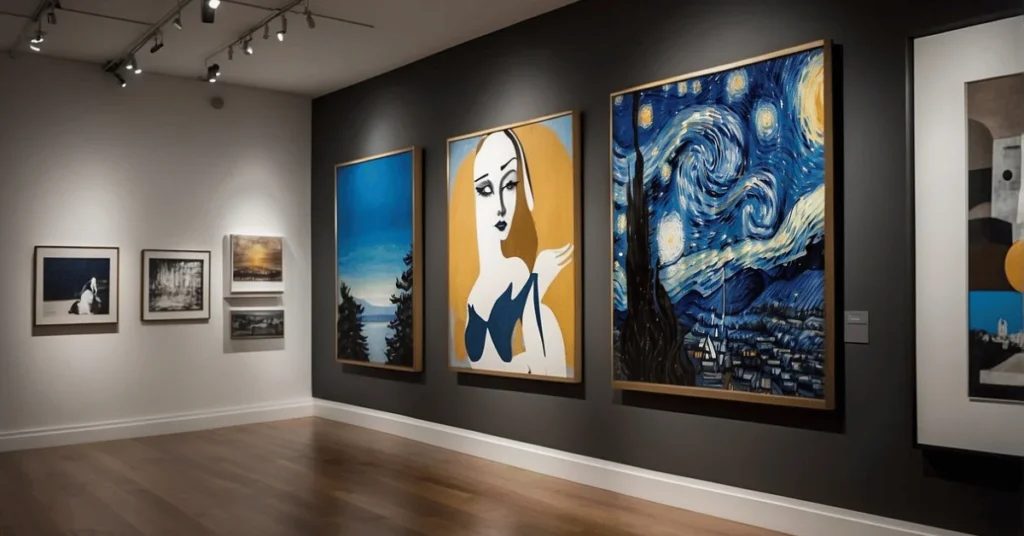
Minimalism is a form of art that emerged in the 1960s and has since then gained popularity in various forms of art such as painting, sculpture, and printmaking. Minimalist art is characterized by its simplicity, use of geometric shapes, and a limited color palette. In this section, we will discuss our top picks of key minimalist artists who have made significant contributions to the world of art.
Donald Judd
Donald Judd was an American artist, writer, and philosopher who is considered one of the most influential artists of the minimalist movement. He is known for his three-dimensional geometric forms and his use of industrial materials such as steel, aluminum, and plexiglass. Judd’s sculptures are characterized by their simple, clean lines, and their ability to interact with the surrounding environment.
Frank Stella
Frank Stella is an American painter, sculptor, and printmaker who is known for his work in minimalism and post-painterly abstraction. Stella’s work is characterized by its use of geometric shapes, bold colors, and flat surfaces. His work has been exhibited in major museums around the world and has influenced many other artists.
Dan Flavin
Dan Flavin was an American minimalist artist who is known for his use of fluorescent light bulbs to create sculptural objects and installations. Flavin’s work is characterized by its use of light, color, and space. His work has been exhibited in major museums around the world and has influenced many other artists.
Sol LeWitt
Sol LeWitt was an American artist who is considered one of the founders of conceptual art and minimalism. LeWitt’s work is characterized by its use of simple geometric shapes, repetition, and a limited color palette. He is known for his wall drawings, which are created using a set of instructions that are executed by others.
Ellsworth Kelly
Ellsworth Kelly was an American painter, sculptor, and printmaker who is known for his use of geometric shapes, bold colors, and flat surfaces. Kelly’s work is characterized by its simplicity and its ability to interact with the surrounding environment. His work has been exhibited in major museums around the world and has influenced many other artists.
Robert Morris
Robert Morris was an American sculptor, conceptual artist, and writer who is considered one of the founders of minimalism. Morris’s work is characterized by its use of simple geometric shapes, repetition, and a limited color palette. He is known for his large-scale sculptures that interact with the surrounding environment.
Carl Andre
Carl Andre is one of Americas most famous minimalist artists who is known for his sculptures made from industrial materials such as steel, aluminum, and copper. Andre’s work is characterized by its simplicity, repetition, and use of geometric shapes. His work has been exhibited in major museums around the world and has influenced many other artists.
Richard Serra
Richard Serra is an American minimalist artist who is known for his large-scale sculptures made from industrial materials such as steel. Serra’s work is characterized by its simplicity, repetition, and use of geometric shapes. His work has been exhibited in major museums around the world and has influenced many other artists.
Agnes Martin
Agnes Martin was an American painter who is known for her minimalist paintings that are characterized by their use of simple geometric shapes and a limited color palette. Martin’s work has been exhibited in major museums around the world and has influenced many other artists.
Anne Truitt
Anne Truitt was an American sculptor who is known for her minimalist sculptures made from wood. Truitt’s work is characterized by its simplicity, repetition, and use of geometric shapes. Her work has been exhibited in major museums around the world and has influenced many other artists.
Barnett Newman
Barnett Newman was an American painter who is known for his minimalist paintings that are characterized by their use of simple geometric shapes and a limited color palette. Newman’s work has been exhibited in major museums around the world and has influenced many other artists.
Tony Smith
Tony Smith was an American sculptor who is known for his minimalist sculptures made from steel. Smith’s work is characterized by its simplicity, repetition, and use of geometric shapes. His work has been exhibited in major museums around the world and has influenced many other artists.
Eva Hesse
Eva Hesse was a German-American sculptor who is known for her minimalist sculptures made from industrial materials such as fiberglass and latex. Hesse’s work is characterized by its organic shapes and its ability to convey emotion through the use of simple materials.
Yayoi Kusama
Yayoi Kusama is a Japanese artist who is known for her minimalist sculptures and installations that are characterized by their use of repetition and pattern. Kusama’s work has been exhibited in major museums around the world and has influenced many other artists.
Characteristics of Minimalist Art
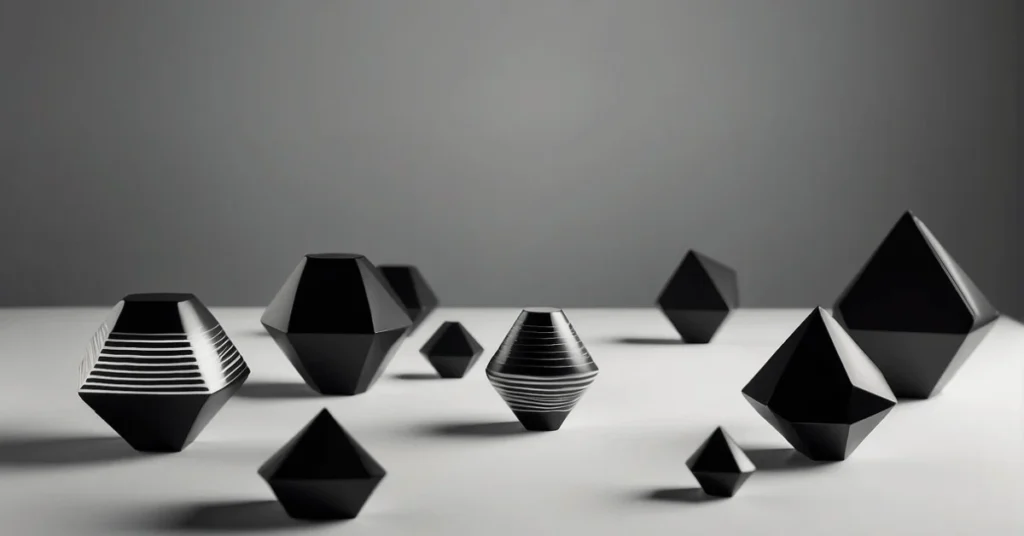
Minimalist art is a genre of art that emerged in the United States in the 1960s as a reaction to Abstract Expressionism. It is characterized by its simplicity, clarity, and use of geometric patterns and space. In this section, we will discuss the key characteristics of minimalist art.
Simplicity and Clarity
One of the defining characteristics of minimalist art is its simplicity. Famous Minimalist artists aimed to create art that was stripped down to its most basic elements. They believed that art should be free from any extraneous details or embellishments and that it should be able to stand on its own.
Minimalist art is also characterized by its clarity. The most famous minimalist artists sought to create art that was easy to understand and that did not require any interpretation. They believed that art should be able to communicate its message clearly and directly.
Geometric Forms and Space
Minimalist art often makes use of geometric forms such as squares, rectangles, circles, and lines. These forms are selected for their inherent simplicity and the structural harmony they bring to compositions. Famous minimalist artists often use these forms to create a sense of order and balance in their art.
Space is also an important element in minimalist art. Famous minimalist artists often use space to create a sense of depth and to emphasize the relationship between objects. They believe that space is just as important as the objects themselves and that it can be used to create a sense of tension and drama in their art.
Color and Materials
Famous minimalist artists often use a monochromatic palette or a limited range of colors in their art. They believe that color can be a distraction and that it can detract from the purity of their art.
Industrial materials such as steel, plywood, latex, and fiberglass are often used in minimalist art. These materials are selected for their simplicity and their ability to convey a sense of industrial strength and durability. Famous minimalist artists believe that these materials are honest and straightforward and that they are a reflection of the world around us.
Let’s Look at Famous Minimalist Artists in Different Mediums
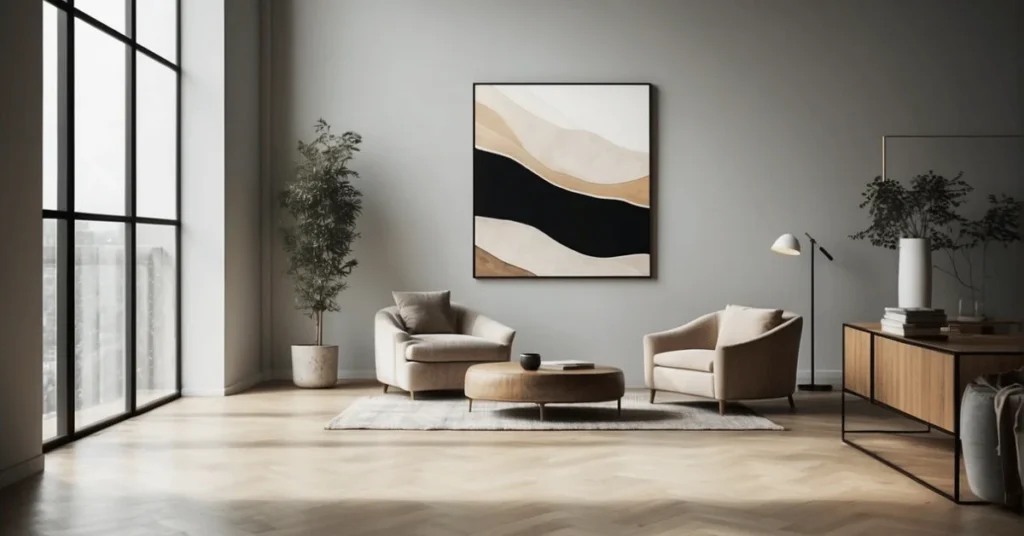
Minimalism is an art movement that has influenced many mediums, including sculpture, painting, drawing, installation art, architecture, and design. In this section, we will be exploring some of the most famous minimalist artists and their works in different mediums.
Sculpture
Sculpture is a medium that has been used by famous minimalist artists to express their ideas. One of the most famous minimalist sculptors is Donald Judd. His untitled works, such as “Untitled” (1967) and “Untitled II” (1969), are made of industrial materials like steel and aluminum and are characterized by their clean lines and geometric shapes.
Painting
Minimalist painting is characterized by its use of simple geometric shapes, monochromatic colors, and flat surfaces. Frank Stella is one of the most famous minimalist painters. His works, such as “Harran II” (1967) and “Die Fahne Hoch!” (1959), are characterized by their use of bold, contrasting colors and simple geometric shapes.
Drawing
Minimalist drawing is characterized by its use of simple lines and shapes. Agnes Martin is one of the most famous minimalist artists who worked in drawing. Her works, such as “Untitled” (1989) and “Untitled” (1977), are characterized by their use of simple lines and grids.
Installation Art
Installation art is a medium that has been used by many famous minimalist artists to create immersive experiences for the viewer. One of the most famous minimalist installation artists is Dan Flavin. His works, such as “untitled (to the real Dan Hill)” (1978) and “untitled (to Piet Mondrian through his preferred colors, red, yellow, and blue)” (1972), are characterized by their use of fluorescent lights to create colorful and immersive environments.
Architecture
Minimalist architecture is characterized by its use of simple geometric shapes, clean lines, and monochromatic colors. The Guggenheim Museum in New York City, designed by Frank Lloyd Wright, is an example of minimalist architecture. Its spiral shape and use of concrete and glass create a clean and modernist aesthetic.
In conclusion, minimalism has influenced many mediums and has been used by many famous artists to express their ideas. Whether it’s sculpture, painting, drawing, installation art, or architecture, minimalism continues to be a source of inspiration for many artists today.
Impact and Legacy
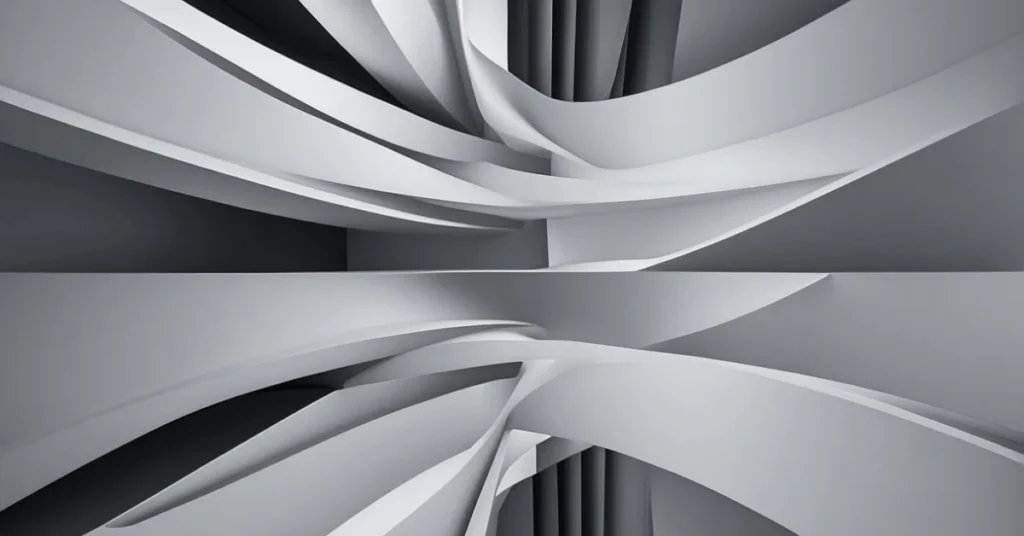
Minimalist art has had a profound impact on the art world and beyond. Its influence can be seen in various art forms, such as conceptual art, modernism, pop art, land art, light and space movement, performance, fashion, and urban design. In this section, we will explore the legacy of minimalist art and how it has shaped contemporary culture.
Influence on Other Art Forms
Minimalist art has influenced various art forms, such as conceptual art, which emerged in the 1960s. Conceptual artists rejected traditional art forms and focused on the idea or concept behind the art. Minimalist art’s emphasis on simplicity and reductionism influenced the conceptual artists’ focus on the idea or concept behind the art.
Minimalist art also had an impact on modernism, which was a movement that emerged in the late 19th century. Modernist artists rejected traditional art forms and focused on the formal elements of art, such as color, line, and shape. Minimalist art’s emphasis on the formal elements of art influenced the modernist artists’ focus on these elements.
Minimalist Art in Modern Culture
Minimalist art influence can be seen in various art forms, such as fashion and urban design. Minimalist art’s emphasis on simplicity and reductionism has influenced fashion designers’ focus on clean lines and minimalism in their designs. Urban designers have also been influenced by minimalist art’s emphasis on simplicity and reductionism in their designs.
Frequently Asked Questions
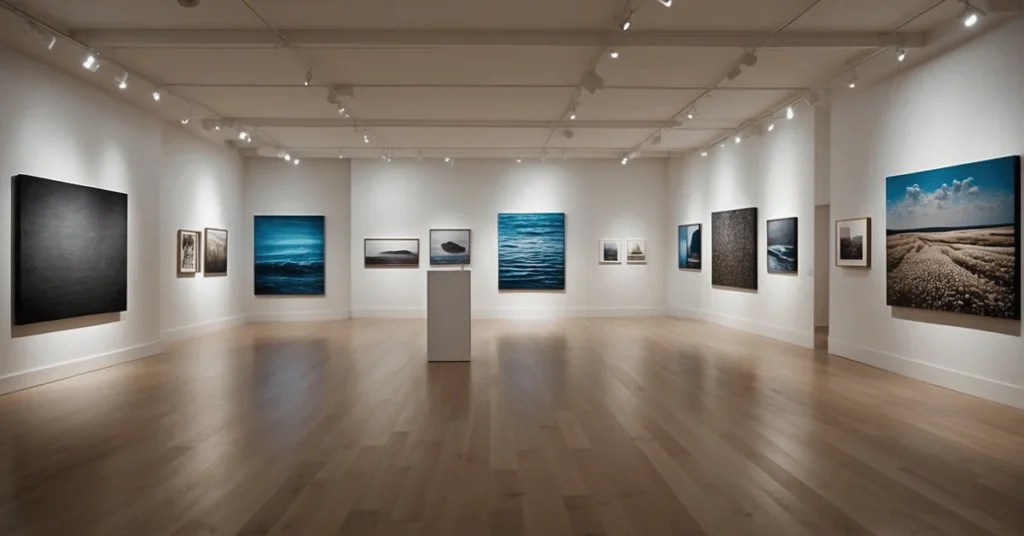
Who are the leading figures in the minimalist art movement?
Minimalism is a movement that emerged during the 1950s and 1960s. The leading figures of the minimalist art movement are Donald Judd, Dan Flavin, Carl Andre, and Sol LeWitt. These artists believed that art should be stripped down to its most basic elements, and that form and material were more important than content.
What are the defining characteristics of minimalist paintings?
Minimalist paintings are characterized by their simplicity, geometric shapes, and monochromatic color schemes. They often feature large, flat areas of color, and are devoid of any extraneous detail or ornamentation. Minimalist painters sought to create works that were objective, impersonal, and free from any emotional or expressive content.
Can you name famous minimalist artists active today?
Some prominent and famous minimalist artists who are active today include Agnes Martin, Robert Irwin, and Ellsworth Kelly. These artists have continued to develop and refine the minimalist aesthetic, and have created works that are both visually stunning and intellectually engaging.
Who were the pioneering minimalist painters of the 20th century?
The pioneering minimalist painters of the 20th century were Frank Stella, Donald Judd, and Agnes Martin. These artists were instrumental in developing the minimalist aesthetic, and their works continue to inspire and influence artists today.
What are some iconic examples of minimalism in art?
Some iconic examples of minimalism in art include Frank Stella’s “Black Paintings,” which feature large, monochromatic canvases with simple geometric shapes, and Donald Judd’s “Stacks,” which are three-dimensional sculptures made from identical units of industrial materials.
Which artists are known for their contributions to minimalist printmaking?
Some artists who are known for their contributions to minimalist printmaking include Sol LeWitt, Richard Serra, and Brice Marden. These artists have created prints that are characterized by their simplicity, precision, and attention to detail.
We’ve explored the world of famous minimalist artists, but now it’s your turn to join the discussion! Have a favorite and famous minimalist artist or unique insight to share? We’d love to hear from you. Share your thoughts in the comments below!


